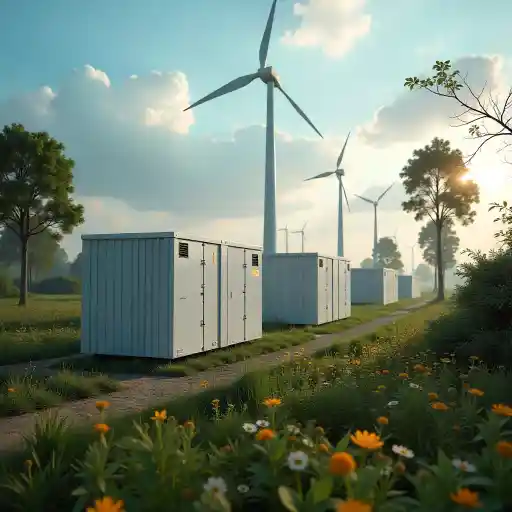India has crossed 100 GW of solar PV manufacturing capacity, according to the Ministry of New and Renewable Energy. But there’s a catch: solar only works when the sun shines, and wind only when the breeze blows. That’s where grid stability becomes tricky.
Battery energy storage systems (BESS) are the missing piece. They store surplus power and release it when demand spikes. With India chasing 500 GW of renewable capacity by 2030, BESS will move from being optional to essential.

The government is targeting 74 GW of storage capacity by 2031-32, compared to just 205 MW today. To speed things up, it has cleared ₹54 billion in viability gap funding for 30 GW of BESS, expected to draw investments worth ₹330 billion.
Tata Power
Tata Power, the country’s largest integrated power company, has become the first mover in the standalone BESS space. Its renewable arm has signed an agreement with NHPC for a 120 MWh project in Kerala, set for completion in 15 months.
This is part of NHPC’s broader 500 MWh storage plan in the state. Tata Power is also planning 100 MW of storage across 10 sites in Mumbai to ensure uninterrupted supply to metros, hospitals, and data centers.
Beyond storage, the company is pushing pumped hydro, with 2.8 GW planned by 2028 and another 1.8 GW by 2030. Its EV charging arm, Easy Charge, is also scaling 10x in the next five years.
Financial check: Q1 FY26 revenue rose 4.3% YoY to ₹180.3 billion, with PAT up 6.1% at ₹12.6 billion. But at 30x earnings, the stock trades at a premium to peers.
Acme Solar
Acme Solar, one of the largest private renewable players, is building aggressively in both generation and storage. Its portfolio includes 6.9 GW of projects and 550 MWh of standalone BESS under development.
It has already tied up with NHPC for two storage projects in Andhra Pradesh, totaling 550 MW. These contracts could generate around ₹700 million annually at peak, with mid-teen returns.
The real play, though, is in Fully Dispatchable Renewable Energy (FDRE). Acme has ordered more than 3.1 GWh of batteries for FDRE projects that will supply power at ₹9 per unit for longer durations.
Financial check: Q1 FY26 income shot up 72% YoY to ₹5.8 billion, with PAT jumping from ₹10 million to ₹1.3 billion. But valuation is steep at 41x earnings.
Bondada Engineering
Bondada, better known for EPC work in telecom, railways, and solar, has now entered the BESS space. It bagged an ₹8.3 billion order from Tamil Nadu Green Energy Corporation for a 400 MWh storage project.
This deal marks its first major step into utility-scale storage under a build-own-operate model. Alongside, Bondada has an order book of ₹50.4 billion, heavily skewed towards renewables.
Financial check: Revenue nearly doubled in FY25 to ₹15.7 billion, with EBITDA up 156% to ₹1.8 billion. PAT grew 149% to ₹1.1 billion. The company is aiming for ₹100 billion revenue by FY30, with 2 GW of BESS in its pipeline.
